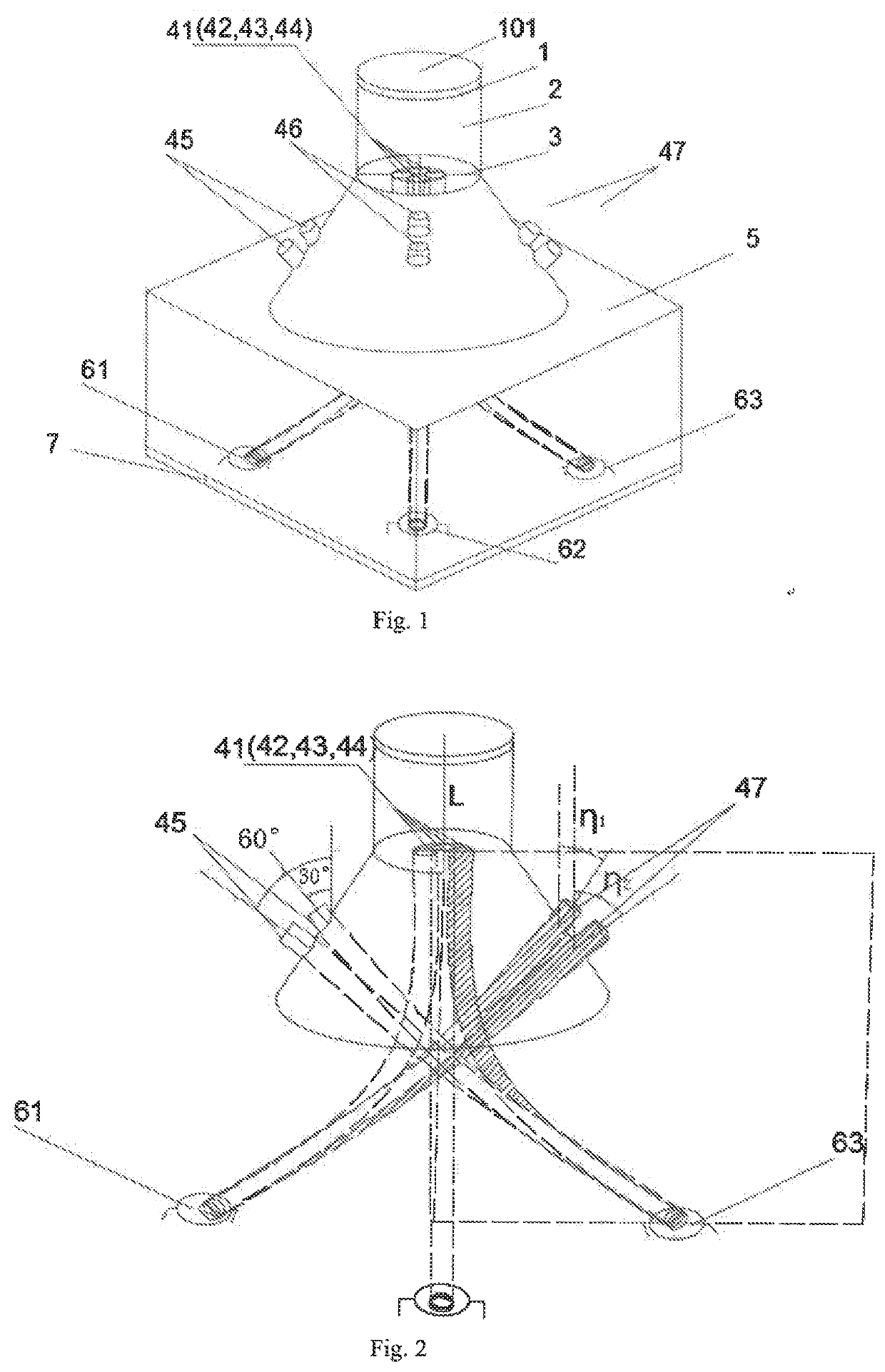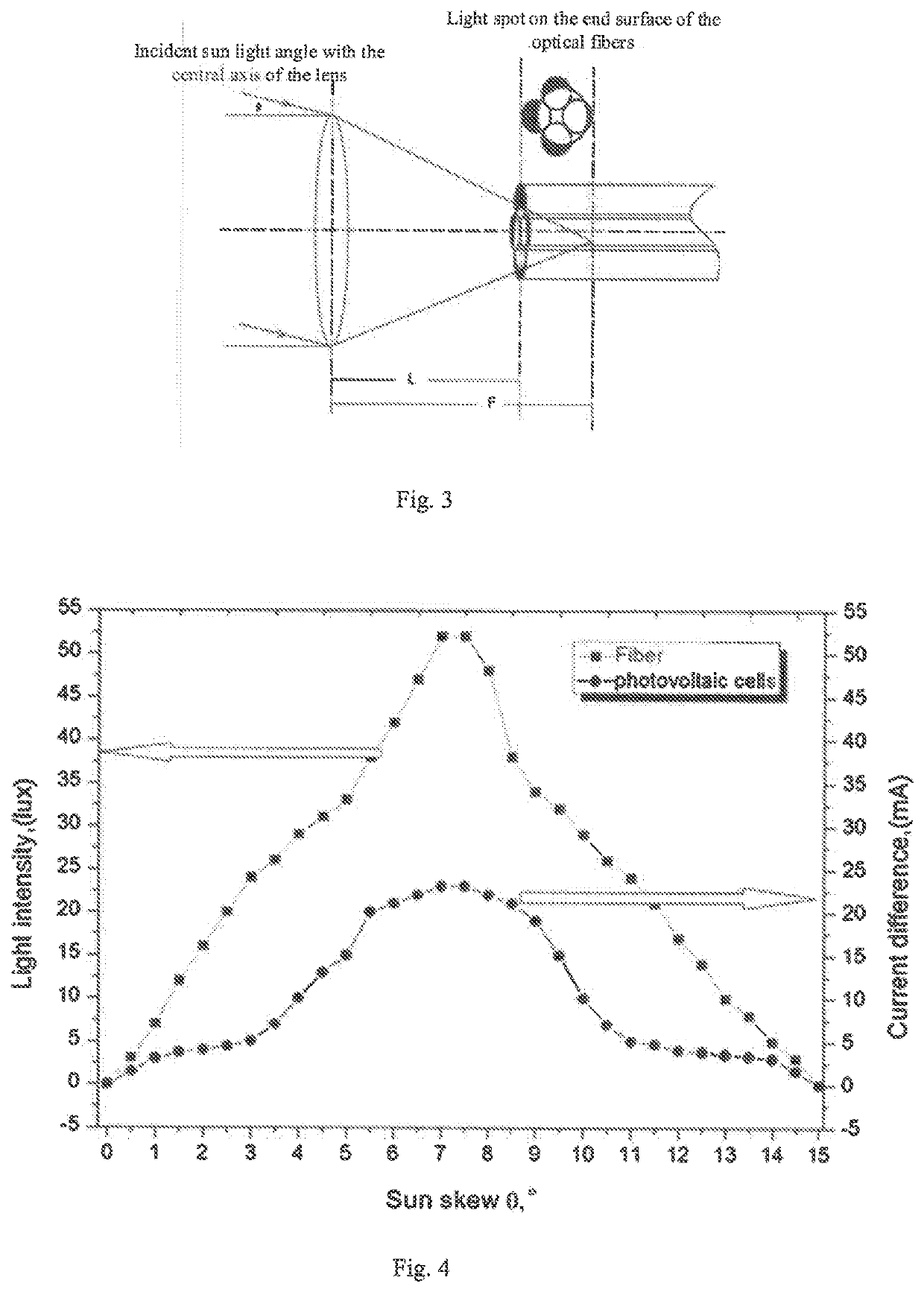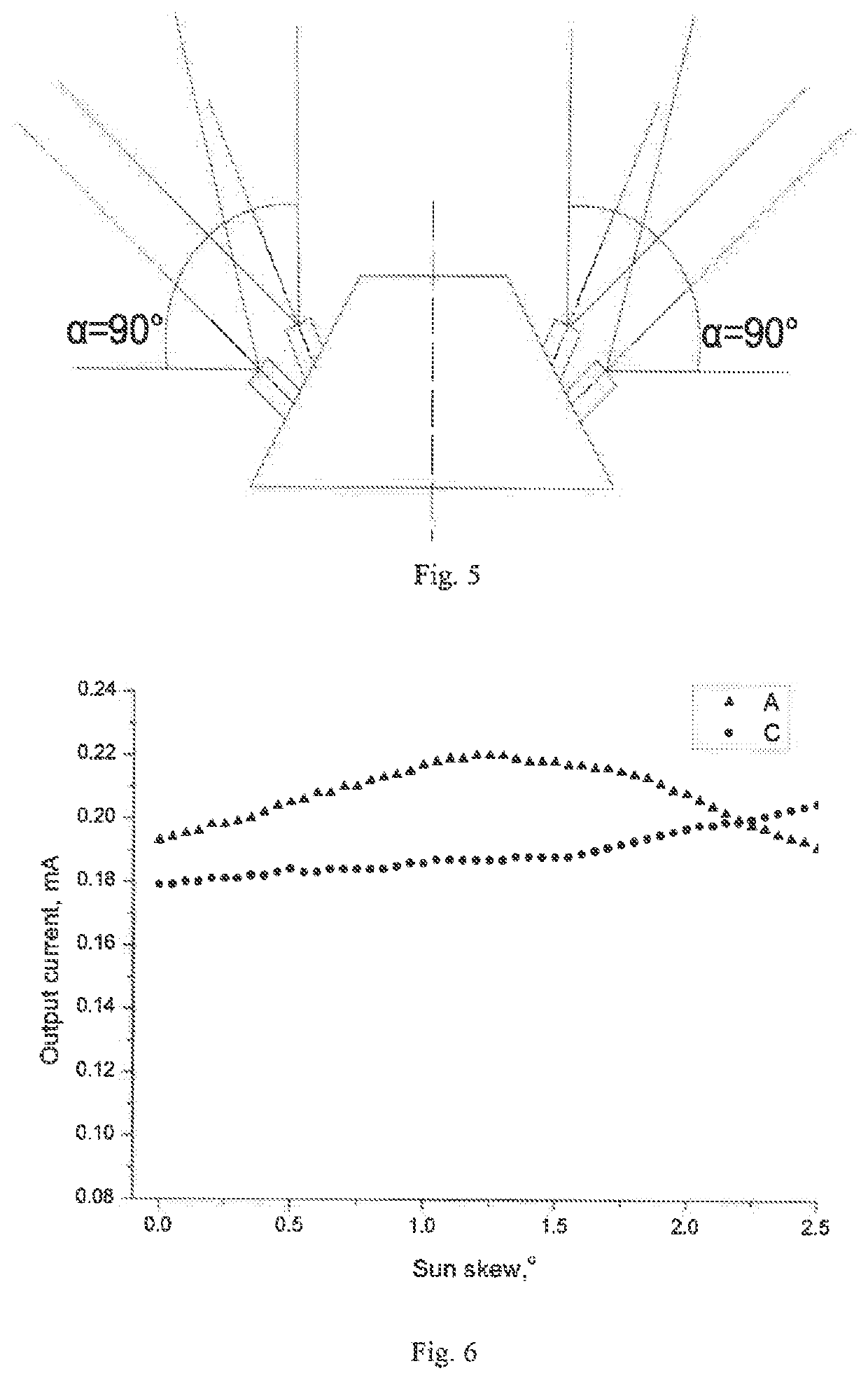Solar tracking sensor based on fiber light guidance
- Summary
- Abstract
- Description
- Claims
- Application Information
AI Technical Summary
Benefits of technology
Problems solved by technology
Method used
Image
Examples
Embodiment Construction
[0031]The invention will be further described below in conjunction with the drawings and specific embodiments.
[0032]FIG. 1 shows the structural diagram of the solar tracking sensor based on optical fibers, wherein the system comprising a fine-positioning module, a coarse-positioning module, and a signal acquisition module, wherein the fine-positioning module comprising a convex lens 1, a lens tube 2, a fixing tube 3 and four fine-positioning optical fibers 41-44, wherein the lens tube 2 comprises the first lens tube and the second lens tube, wherein the first lens tube is a cylinder, wherein the second lens tube is a circular truncated cone, and the two ends of the second lens tube are connected to the first lens tube and the dark box 5, respectively. The convex lens 1 is installed at the top of the lens tube 2. In order to filter out the unwanted lights such as inflared light, an optical filter 101 may be installed on the top of the convex lens.
[0033]The input end faces of the four...
PUM
 Login to View More
Login to View More Abstract
Description
Claims
Application Information
 Login to View More
Login to View More - R&D
- Intellectual Property
- Life Sciences
- Materials
- Tech Scout
- Unparalleled Data Quality
- Higher Quality Content
- 60% Fewer Hallucinations
Browse by: Latest US Patents, China's latest patents, Technical Efficacy Thesaurus, Application Domain, Technology Topic, Popular Technical Reports.
© 2025 PatSnap. All rights reserved.Legal|Privacy policy|Modern Slavery Act Transparency Statement|Sitemap|About US| Contact US: help@patsnap.com



